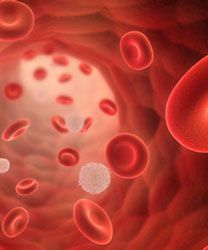Mixed Results From 2 Clinical Trials Investigating Pembrolizumab in Myeloma
An FDA analysis of data from 2 randomized clinical trials investigating pembrolizumab in multiple myeloma showed inconsistent results regarding the relationship between immune-related adverse events and objective responses. The KEYNOTE-183 and KEYNOTE-185 trials were reviewed during the 2018 ASCO Annual Meeting.

An FDA analysis of data from 2 randomized clinical trials investigating pembrolizumab (Keytruda) in multiple myeloma (MM), showed inconsistent results regarding the relationship between immune-related adverse events (irAEs) and objective responses. The KEYNOTE-183 and KEYNOTE-185 trials were reviewed during the 2018 ASCO Annual Meeting.
A study showed a similar response rate in patients with relapsed/refractory MM both with and without irAEs when treated with pembrolizumab in addition to an immumodulatory agent (lenalidomide [Revlimid]; pomalidomide [Pomalyst]) and dexamethasone. A trial including patients with newly diagnosed MM demonstrated a higher response rate in pembrolizumab-treated patients with irAEs. In both of these trials, patients given the standard treatment had irAE-associated response rates similar to or higher than rates seen in patients who also received pembrolizumab.
FDA researchers failed to shed light on reasons for a higher mortality in the pembrolizumab-treated patients during their analysis, an observation that led to a hold on both trials last year.
“Where do we go from here?” Aviva C. Krauss, MD, a medical officer at the FDA, said during the presentation of the studies. “We have a lot of experience using PD-1- and PD-L1-directed therapies, but there is still much to learn about these therapies. In particular, we need more data to help us dissect those patients who have efficacy on the one hand and toxicity on the other. To do that we need to look at the impact of various factors, host and disease, on both efficacy and toxicity.”
The needed information cannot be “teased out” of single-arm clinical studies, she added. Earlier initiation of randomized phase II trials would provide “exponentially more information.”
FDA investigators performed the analysis in an effort to gain more insight into a higher mortality detected by interim analyses of the KEYNOTE-183 trial, which involved 249 patients with relapsed/refractory MM, and the KEYNOTE-185 trial, which involved 301 patients with newly diagnosed MM. In both trials, patients were randomized to receive an immunomodulator and dexamethasone with or without pembrolizumab.
When KEYNOTE-183 was put on hold after a median follow-up of 8.1 months, 29 patients in the pembrolizumab arm had died compared with 21 in the control group. The difference represented a 61% increase in the survival hazard for patients who received pembrolizumab, which was not a statistically significant difference (HR, 1.61; 95% CI, 0.91-2.85).
In KEYNOTE-185, the hold occurred after a median follow-up of 6.6 months. The interim analysis showed 19 deaths in pembrolizumab-treated patients versus nine in the control group. The difference represented a doubling of the survival hazard ratio, which also was not statistically significant (HR, 2.06; 95% CI, 0.93-4.55).
Although irAEs are an established toxicity of checkpoint inhibitors, the association between irAEs continues to be debated, said Krauss. FDA investigators continued the examination of the relationship, comparing objective response rates in patients with and without irAEs in the 2 MM trials of pembrolizumab.
In KEYNOTE-183, 56% of patients in the pembrolizumab arm developed at least irAE, which was associated an objective response rate (ORR) of 37%, not significantly different from the 31% ORR in patients who did not have irAEs. Grade ≥3 irAEs (21 patients) were associated with an ORR of 29%.
In KEYNOTE-185, 68% of patients in the pembrolizumab arm had one or more irAEs, which were associated with an ORR of 73%. Patients who developed grade ≥3 irAEs (n = 54) had an ORR of 70%. The response rate declined to 45% in the 49 patients who did not have an irAE.
Krauss reported that 64 patients in the control group developed irAEs, and 47 (73%) responded to treatment. Eight of 12 patients who developed grade ≥3 irAEs responded to treatment. The response rate dipped to 53% in the 86 patients who had no irAEs.
The reason for the disparate findings are unclear, but one possibility is that patients with newly diagnosed myeloma retain greater capacity to mount an immune response by virtue of having not been exposed to the dampening effects of prior therapy, Krauss explained. The reasoning has support from the higher incidence of irAEs and grade ≥3 irAEs among pembrolizumab-treated patients in KEYNOTE-185 as compared with KEYNOTE-183.
Reference:
Krauss AC, Mulkey F, Shen YL, et al. FDA analysis of pembrolizumab trials in multiple myeloma: immune related adverse events (irAEs) and response.J Clin Oncol. 2018;36(suppl; abstr 8008). abstracts.asco.org/214/AbstView_214_230135.html.






